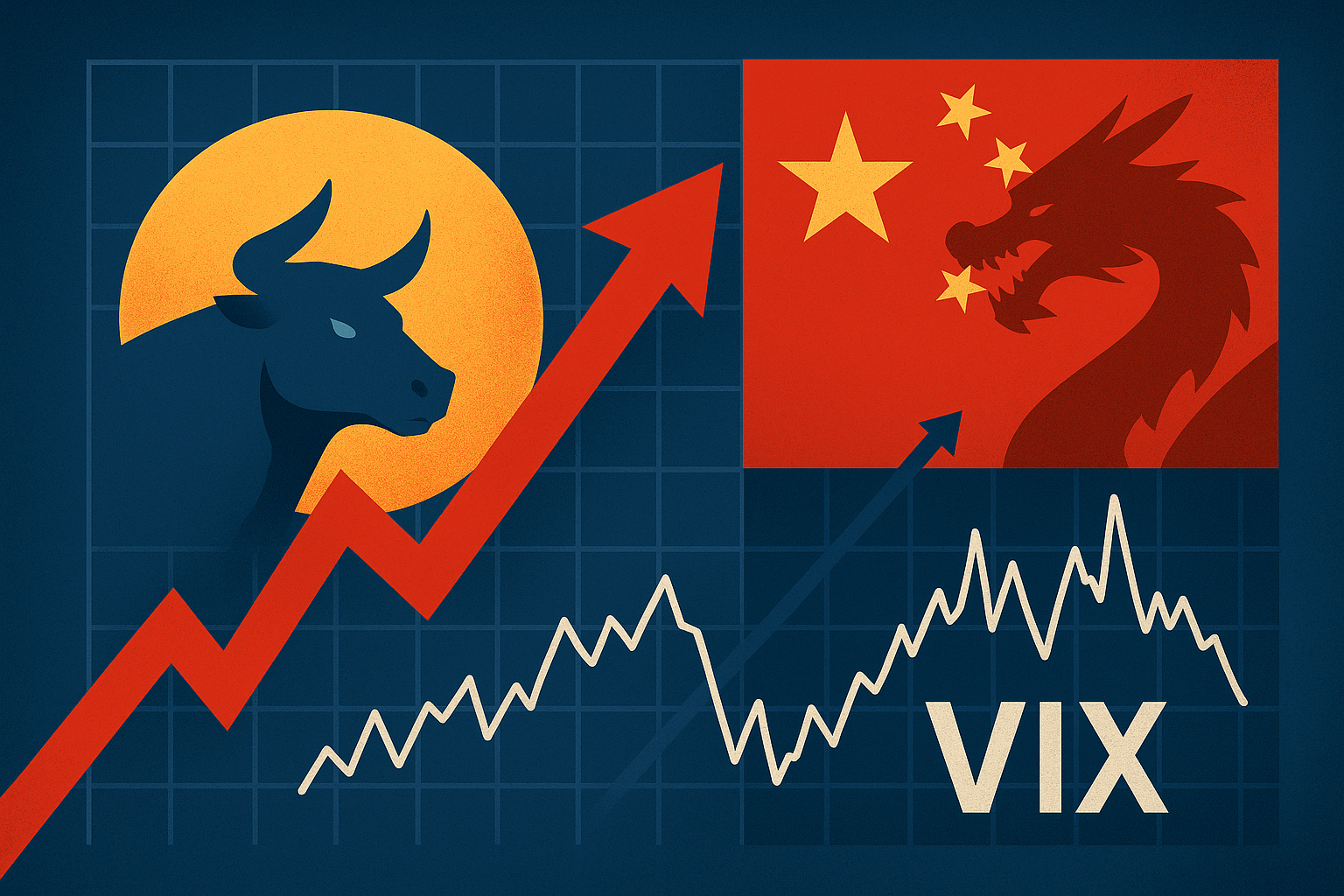As the trading week unfolds, global markets are treading cautiously. U.S. equity futures showed modest gains on Tuesday, lifted by stronger-than-expected bank earnings and renewed strength in chip stocks. Yet, a surge in implied volatility—the Cboe Volatility Index (VIX) reaching its highest level in months—signals that investors are bracing for turbulence. The catalyst? Growing uncertainty surrounding U.S.–China trade relations and geopolitical policy maneuvers that could reshape global capital flows.
According to Reuters, “Wall Street futures rose on a boost from chip stocks and positive earnings sentiment,” even as lingering macro and political risks spurred defensive hedging activity. With equity valuations stretched and cross-border policy tensions escalating, the markets appear to be entering a delicate balancing act—where optimism over earnings collides with macroeconomic and geopolitical caution.
Banking Strength Keeps Bulls in Play
Financials led early-week optimism as major U.S. banks posted resilient earnings despite a challenging macro backdrop. Rising net interest income and healthy loan growth offered relief to investors concerned about margin compression and credit quality. Analysts at J.P. Morgan noted that “the banking sector’s Q4 guidance could set the tone for risk appetite heading into year-end,” especially if loan loss provisions remain under control.
The banking sector’s stability is providing short-term support for the broader equity complex. However, institutional investors are closely monitoring forward guidance amid signals of softening consumer demand and a potential cooling in business lending.
Chips Power Markets Amid Policy Tension
Semiconductors continue to anchor the market narrative, with chipmakers like Nvidia, AMD, and Micron seeing renewed inflows following reports of strong AI infrastructure demand and strategic partnerships in cloud computing. The Reuters report highlighted chip stocks as key gainers driving futures higher, even as broader sentiment remained cautious.
At the same time, escalating U.S.–China technology tensions have cast uncertainty on the sector’s long-term trajectory. Washington’s latest export curbs on advanced semiconductor equipment to China, paired with Beijing’s push for domestic tech sovereignty, have investors assessing potential supply chain disruptions. As one Bloomberg Intelligence strategist put it, “The chip sector is sitting at the crossroads of innovation and geopolitics—where opportunity and risk coexist in equal measure.”
Volatility Creeps Back Into the Picture
The VIX—a widely watched measure of market fear—rose above 20 for the first time since mid-summer, underscoring growing anxiety over potential market shocks. Traders are repositioning portfolios with a tilt toward safety, evidenced by inflows into gold and U.S. Treasuries. Gold prices climbed over 1% on Tuesday, according to Reuters, as investors sought refuge from currency and equity fluctuations.
Volatility spikes like this often precede short-term market pullbacks or sector rotations. With key macro data and corporate earnings releases due over the next two weeks, investors appear unwilling to take large directional bets. The growing divergence between earnings resilience and macro fragility could define market behavior into November.
Why This Matters for Investors
For investors, the market’s current mood is less about panic and more about positioning. The interplay between earnings momentum, bond yields, and geopolitical risk will determine whether this volatility uptick is a temporary hedge or the start of a broader re-pricing.
Reuters reports that U.S. 10-year Treasury yields remained stable around 4.3%, but traders warn that any upside breakout could pressure equity valuations—especially in high-growth sectors like technology. Simultaneously, global fund managers are reassessing exposure to export-heavy companies and emerging markets sensitive to U.S.–China policy swings.
According to data from Morningstar Direct, institutional cash levels have risen to their highest since early 2023, signaling growing caution among portfolio managers who anticipate volatility to persist into year-end.
Key Investment Insight
- Opportunities: Selective exposure to sectors demonstrating earnings resilience—particularly in banking, AI-driven semiconductors, and defense technology—could offer relative strength amid market volatility.
- Risks: Trade policy uncertainty, potential escalation in U.S.–China sanctions, and yield curve volatility remain key downside risks.
- What to Watch: The trajectory of bond yields, Q4 earnings revisions, and the evolution of U.S.–China trade talks will likely dictate short-term market direction.
Markets are walking a fine line between optimism and fragility. Strong fundamentals in sectors like banking and technology are providing short-term lift, but rising geopolitical tensions and volatility suggest investors should tread carefully. Diversification, disciplined risk management, and selective positioning will be key as policy-driven uncertainty reshapes the investment landscape.
For investors seeking clarity amid the noise, staying updated with credible, data-driven financial intelligence is essential.
Follow MoneyNews.Today for timely analysis, investor insights, and actionable market coverage shaping tomorrow’s capital markets.





